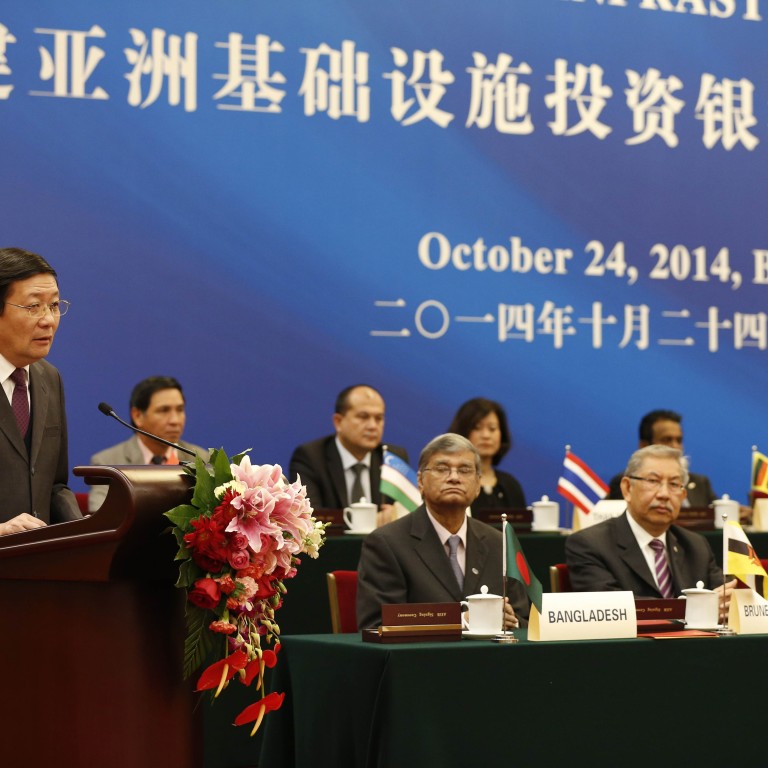
New Asia bank part of China's agenda
Infrastructure lender a political move to boost Beijing's recognition and strengthen yuan
Let's get it clear right away that this is not about helping poorer Asian countries build waterworks, power stations and roads. This is about Beijing pushing to have itself recognised as No 1 in Asia.

Neither of these two welcome a challenge by Beijing and both have thus been busy arm-twisting various Asian governments not to sign up with Beijing. So far, South Korea and Indonesia have heeded the call.
Leaving aside how silly this political spat is, what stands out here first of all is the estimate that Asia needs US$800 billion a year of infrastructure investment. The obvious sub-text is that these needs are so great that they can only be met by a big development bank.
But put this into perspective. The table shows you that 15 Asian countries for which the figures are readily available have a combined annual investment in fixed capital formation of not too far from US$8 trillion a year, 10 times as much.
Not all of this is infrastructure investment, of course, but clearly Asia already funds its infrastructure needs quite handily without the need for another big regional development bank, particularly when the country wanting to sponsor this bank accounts for 60 per cent of the total spending. Perhaps China should just content itself with its own development bank.
The reason it will not, however, is that this initiative is also about Beijing trying to make the yuan a currency of international trade. Borrowers from the bank will be offered loans in yuan to be used for buying capital equipment from China and to be repaid in yuan.
Borrower beware. It is also what Japan did with the yen through the ADB and then from 1985 to 1995, the yen strengthened from 260 to 84 against the US dollar. The ADB crushed its customers. It became the Asia Destruction Bank.
The same threat now looms with this new China-dominated bank. The yuan is clearly on a politically determined path to sustained long-term appreciation. You borrow yuan at your peril if your income to repay the loan is denominated in other currencies.
The reality here is that the development bank is a mid-20th century concept that has become outdated in the 21st century. There may have been some reason in 1950 to think that water projects in Asia could not be viable without development aid, but it is not so now. Commercial finance can do the job perfectly well today.
The only circumstance in which it has difficulty with infrastructure projects is if they are not commercially viable, either because there is simply insufficient demand or because returns are artificially suppressed by political edict.
It is initiatives of this sort which find their way to development banks in today's world and China is indeed specialised in them, vast concrete-pouring jobs undertaken with little consideration other than a political requirement to prop up the published economic growth figures.
Why any other country should then want to join China in throwing good money at such loser projects must remain a mystery. The idea makes sense only for Beijing and only on a narrow political agenda.

